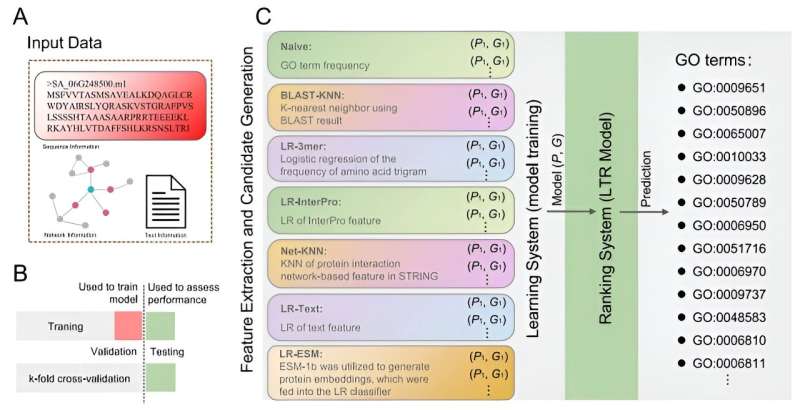This article has been reviewed according to Science X's editorial process and policies. Editors have highlighted the following attributes while ensuring the content's credibility:
fact-checked
peer-reviewed publication
trusted source
proofread
Salt-stress survival: AI-powered study decodes the resilience of Spartina alterniflora

Salt stress poses a major challenge to global crop production, especially in cereals, necessitating a comprehensive understanding of salt tolerance mechanisms. Halophytes like Spartina alterniflora, thriving in high-salinity environments, offer valuable insights due to their unique adaptations.
However, the molecular mechanisms behind their salt tolerance remain largely unexplored. Addressing these knowledge gaps is crucial for developing strategies to enhance crop resilience. Due to these challenges, there is a need for in-depth research to elucidate the genetic and molecular basis of salt tolerance in halophytes.
A collaborative research team from the Chinese Academy of Agricultural Sciences has made significant strides in this area, with their findings published in the journal Horticulture Research on March 28, 2024. The study employs machine learning to investigate the transcriptomic responses of Spartina alterniflora to various salt concentrations, revealing new insights into its salt tolerance mechanisms.
The study on Spartina alterniflora revealed significant transcriptional changes in response to salt stress, affecting key pathways such as gene transcription, ion transport, and reactive oxygen species metabolism.
A notable discovery was the identification of a SWEET gene family member, SA_12G129900.m1, which showed convergent selection with its rice ortholog, SWEET15. This gene is crucial for salt tolerance, suggesting its potential for genetic engineering to improve crop resilience.
The study also conducted genome-wide analyses of alternative splicing responses to salt stress, highlighting the complex interplay between transcriptional regulation and post-transcriptional modifications. Interestingly, there was minimal overlap between differentially expressed and differentially spliced genes, indicating distinct regulatory mechanisms.
This innovative approach, combining machine learning with transcriptomic analysis, provides a deeper understanding of salt tolerance mechanisms and offers valuable genetic resources for developing salt-tolerant crops.
Dr. Huihui Li, the corresponding author, stated, "Our innovative approach combining machine learning with transcriptomic analysis offers new insights into the salt tolerance mechanisms of Spartina alterniflora. This research not only enhances our understanding of halophyte biology but also provides valuable genetic resources for improving crop resilience in saline conditions."
The findings from this study have significant implications for agricultural biotechnology. By identifying key genes and pathways involved in salt tolerance, researchers can develop genetically engineered crops with enhanced resilience to salt stress. This could lead to improved crop yields in saline environments, contributing to global food security in the face of climate change and soil salinization.
More information: Zhangping Huang et al, Exploring salt tolerance mechanisms using machine learning for transcriptomic insights: case study in Spartina alterniflora, Horticulture Research (2024). DOI: 10.1093/hr/uhae082
Journal information: Horticulture Research
Provided by Chinese Academy of Sciences



















